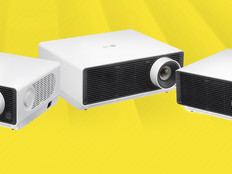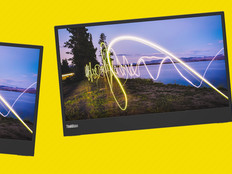Building a Case for Technology
A few years ago, the Department of State's Attorneys and Sheriffs in Vermont was by all accounts a technology lightweight. Underpowered PCs were linked to a dozen siloed LANs, with no means of quickly exchanging court and trial data among the 15 offices and courts spread throughout the rural state. The courtrooms themselves were completely devoid of technology. It was only by means of traditional paper-based processes and onsite manpower that the office was able to keep the wheels of justice in motion.
"The State's Attorneys office in Vermont was behind on the use of technology for a decade and a half," says Sean Thomson, the office's IT director in Montpelier, who came on board in 2008 to guide technology implementation. "All the data heading in and out was paper-based, and there was no way to look to the digital world for transmission."
Fast forward to 2010, and what's developed is a vastly different environment. Driven by skyrocketing support costs, the Vermont State's Attorneys Office dug deep into its budget to fund a complete overhaul of its IT infrastructure, along with a courtroom makeover that brings the latest in video, digital audio and evidence presentation technology to each facility in the circuit via 14 high-tech media carts shared between the 14 county offices, executive office and a dozen courts, some of which have multiple courtrooms. Each cart is loaded with document cameras, projectors, wireless mice and other equipment that let the attorneys bring evidence to life in a way that wasn't possible using traditional methods.
"If the jury members' expectations are built on the image of Law & Order and CSI, and we deliver nothing better than Matlock, then the perception is that prosecutors simply don't know or understand the case before them, and their credibility and professionalism are brought into question," Thomson says. "Now our prosecutors can present their cases and showcase the evidence in court in an arena that truly allows the jury and the court to ascertain the meaning, the impact and the truth behind the evidence."
Around the country, state and local courts are embarking on similar transformations. The ability to present evidence in a high-impact, multimedia format aids the prosecution and defense in making a more compelling case to the jury, courtroom experts say. Investments in IT infrastructure, such as video conferencing platforms and digital audio technology, deliver huge efficiencies and cost savings to court systems. Court reporters and interpreters can service multiple facilities from a central location, greatly reducing travel time and expenses. And hearings conducted via video conferencing can slash prisoner transport expenses while minimizing the amount of time attorneys and witnesses spend travelling to court.
"The impact of all this technology on the court system has been on speeding trials and making things clearer, whether it's a judge or jury trial," says Jim McMillan, principal court technology consultant for the National Center for State Courts. "It really does help in getting better jurisprudence."
Today, a centralized network infrastructure that comprises dozens of new servers, switches and storage area networks enables Thomson to support and administer all of the State's Attorneys Office servers, PCs, notebooks and printers remotely on his own, without having to drive what could be hundreds of miles to work onsite.
Within the courtroom, an AVerMedia document camera, an InFocus high-definition projector, Logitech speakers and a Logitech remote control, and an MX Air mouse help attorneys make their cases. There is also a Toshiba DVD/VHS player on the cart to showcase video projected onto a 70-inch portable screen. An HP USB docking station lets attorneys connect their notebooks to the cart to use all the peripherals with a single USB cable, as opposed to hooking up individual components. "The media cart project was a way to make the tools reflect the expertise behind them," Thomson says.
1,048
Number of video calls the South Dakota Second Judicial Circuit conducted in the first nine months of 2010
The Verdict on Video Conferencing
While video conferencing technology has been around for some time, it's recently taken off in state and local government, thanks to advances in image quality, ease of use and the public's overall comfort with high-definition video as a viable means of communication.
That's been the experience of South Dakota's Second Judicial Circuit. When the court system expanded its Sioux Falls courthouse in 2009, it integrated video conferencing capabilities into its new high-tech Courtroom 5B, along with a 62-inch, wall-mounted flat screen; notebook connections at podiums; and multiple video cameras around the room.
Karl Thoennes, circuit administrator for the court, equipped correctional facilities with Polycom video conferencing systems to obviate the need to transport prisoners to hearings. But as other courts and state facilities came online, the court system began using video conferencing for remote depositions, court reporting and interpreters.
"We use video conferencing like crazy, in ways we never expected," says Thoennes. "It's changed the game more than anything else."
Maricopa County Superior Court in Phoenix has also expanded its video conferencing usage over the years beyond prisoner arraignments. Court personnel tap video links to accommodate people with disabilities who can't make it to the court to testify and to allow witnesses, victims or unruly defendants to participate in proceedings without having to be in the courtroom, explains Bert Binder, Maricopa County Superior Court's director of courtroom technology.
Last year, the Maricopa County courts implemented a remote interpreter program that uses a remotely controlled tilt/pan/zoom camera and a complex audio system to allow offsite interpreters a 360-degree view of the courtroom and a direct audio feed from all courtroom microphones for delivering interpretation services. The new services have generated substantial savings because the court has reduced its reliance on outside contractors. "Now we can have one interpreter cover several court buildings that are many miles apart in the same day," she says. "They're able to work at their desk and remotely connect from one hearing to another, all without travel time."
Go to statetechmag.com/partners111 to read how South Dakota's Second Judicial Circuit partners with other organizations to share video conferencing resources.
Delivering centralized services based on courtroom technologies is the direction in which the Ninth Judicial Circuit Court of Florida is going, according to Matt Benefiel, trial court administrator. The circuit has created what it calls a central AV hub that controls and routes all the audio and video feeds throughout facilities in the circuit via a fiber-optic network. The court system doesn't have to build out video conferencing, court reporting or remote interpreting capabilities into each courtroom, but can deliver those services over the network via the centralized AV hub, he says. In the first year since implementing this strategy, the court has saved $100,000 on centralized interpreting services alone, he says.
"What started with the courtroom of the future expanded to the courthouse of the future and is now evolving into the circuit of the future," says Benefiel. "By centralizing, we get economies of scale that create a much better environment to deploy and support technology."
Summary Judgment

Photo: Andy Duback
Equipping a courtroom with the latest IT doesn't necessarily guarantee efficiencies and cost reductions. The real return is advancing the quality of justice, says Fred Lederer, director of the Center for Legal and Court Technology and a professor at William & Mary Law School in Williamsburg, Va. The school is home to the McGlothlin Courtroom, considered to be the world's most technologically advanced trial and appellate courtroom.
It's critical that the technology replicate the court environment and the court culture, Lederer recommends. His group advises clients to engage stakeholders -- from lawyers to judges -- early on to see how technology can improve the experience without disrupting the judicial process. For instance, the Center for Legal and Court Technology recommends placing the LCD screens for video conferencing exactly where people would normally appear in the courtroom. The group also advises against the use of video conferencing for remote juries because it doesn't comply with legal and cultural requirements.






